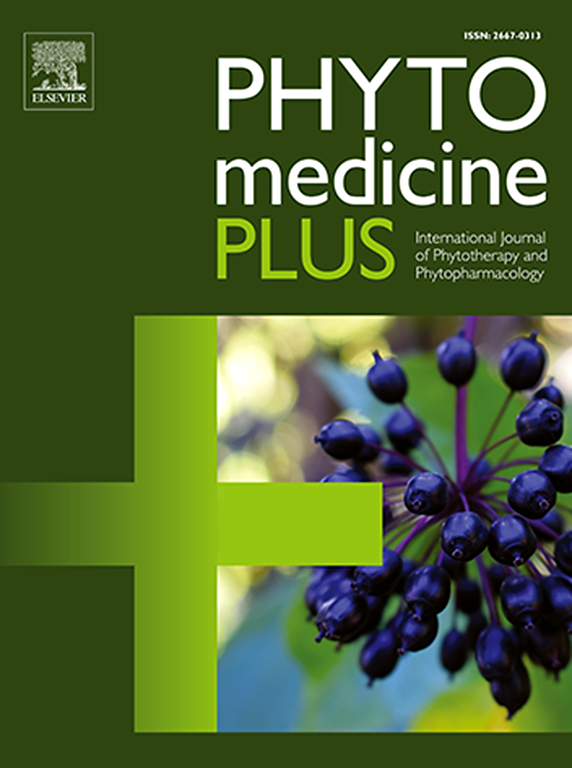Protective effect of essential oil of Foeniculum vulgare Mill. against bleomycin-induced pulmonary fibrosis and oxidative stress in rat
Q3 Pharmacology, Toxicology and Pharmaceutics
引用次数: 0
Abstract
Background
Wild fennel (Foeniculum vulgare Mill.) is a very common plant used in traditional medicine to treat several diseases. In recent years, scientific research proved its biological properties. However, the protective effect of fennel against bleomycin-induced pulmonary fibrosis (BLM-IPF) is not yet study.
Purpose
Fennel essential oil (FEO) composition was characterized and its protective effect was assessed.
Methods
GC–MS was employed to determine the chemical composition of fennel essential oil. The antioxidant activity was evaluated using TAC, DPPH, RAP and ABTS assays. After inducing fibrosis by bleomycin, several biological assays were used to evaluate the protective effect [proteins content, malondialdehyde MD, thiol group, superoxide dismutase (SOD) and catalase (CAT)].
Results
FEO was rich in estragole (77.55 %), fenchone (9.23 %), and limonene (9.23 %), and phenolic compounds and showed a significant antioxidant potential. The effects on BLM-IPF were revealed by disruption and alteration of oxidative stress biomarkers in lung, liver and kidney. Treatment of rats with FEO improved abnormal fluctuations in protein and thiol levels, decreased oxidative stress in terms of MDA and also restored the response of the antioxidant system, measured in terms of SOD and CAT, in lung, liver and kidney. The biological activity was recorded in a dose response manner. The potential of FEO in limiting the progress of the histopathologic effects of BLM-IPF was confirmed by microscopic histological observations, with a reduction of the fibrosis score and the inflammatory index in the FEO treated lung tissue.
Conclusion
These results, proved that FEO could attenuate BLM-induced PF, thus suggesting that the latter could serve as a potential therapeutic approach for PF.

茴香精油对博莱霉素诱导的大鼠肺纤维化和氧化应激的保护作用
背景野生茴香(Foeniculum vulgare Mill.)近年来,科学研究证明了它的生物特性。目的 对茴香精油(FEO)的成分进行表征,并评估其保护作用。方法 采用GC-MS测定茴香精油的化学成分。采用 TAC、DPPH、RAP 和 ABTS 检测法评估茴香精油的抗氧化活性。结果茴香精油富含雌甾醇(77.55%)、葑酮(9.23%)、柠檬烯(9.23%)和酚类化合物,具有显著的抗氧化潜力。对 BLM-IPF 的影响体现在肺部、肝脏和肾脏中氧化应激生物标志物的破坏和改变。用 FEO 治疗大鼠可改善蛋白质和硫醇水平的异常波动,降低以 MDA 表示的氧化应激,还能恢复抗氧化系统的反应(以肺、肝和肾中的 SOD 和 CAT 表示)。生物活性以剂量反应方式记录。显微组织学观察证实了 FEO 在限制 BLM-IPF 组织病理学效应进展方面的潜力,FEO 处理的肺组织纤维化评分和炎症指数均有所下降。
本文章由计算机程序翻译,如有差异,请以英文原文为准。
求助全文
约1分钟内获得全文
求助全文
来源期刊

Phytomedicine Plus
Medicine-Complementary and Alternative Medicine
CiteScore
3.70
自引率
0.00%
发文量
178
审稿时长
81 days
期刊介绍:
 求助内容:
求助内容: 应助结果提醒方式:
应助结果提醒方式:


